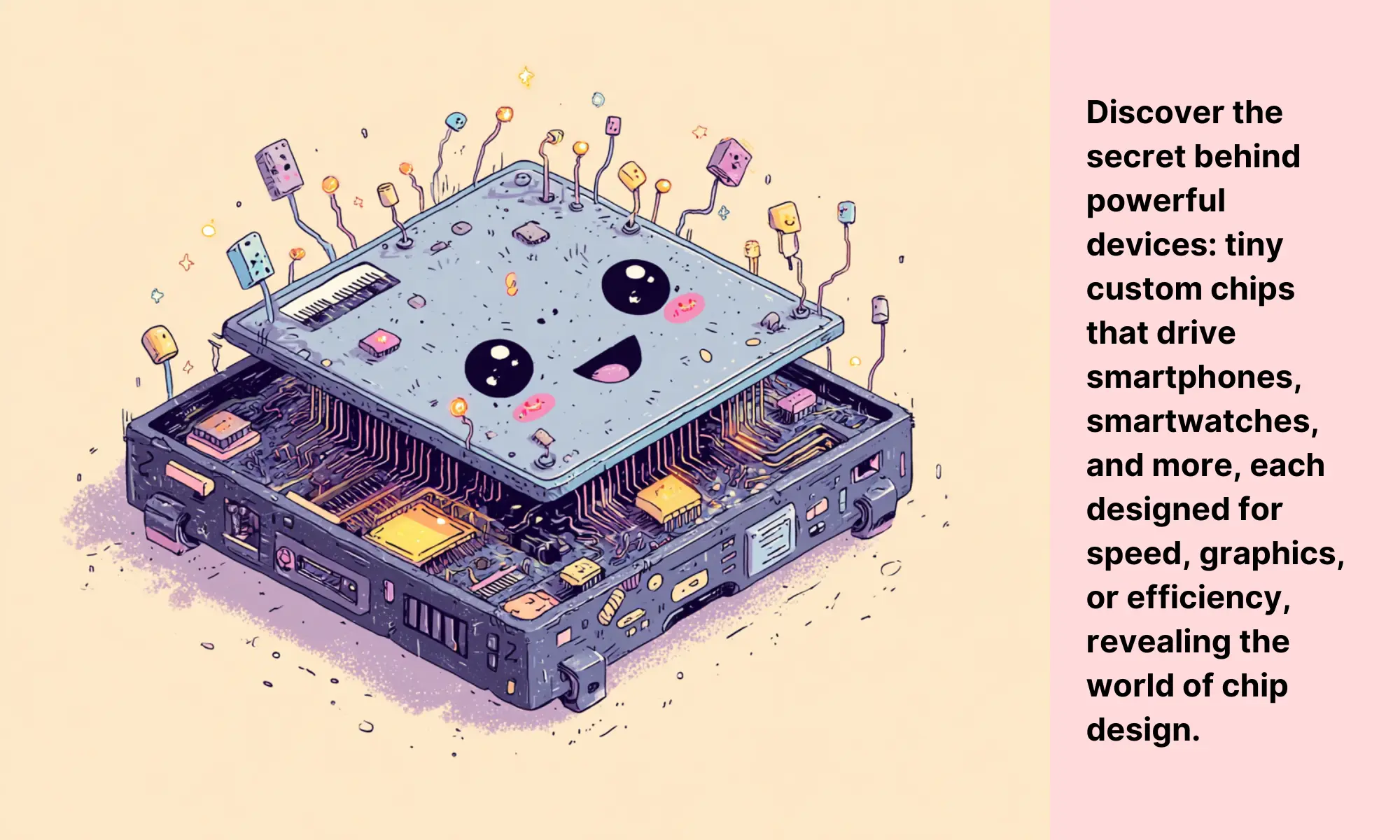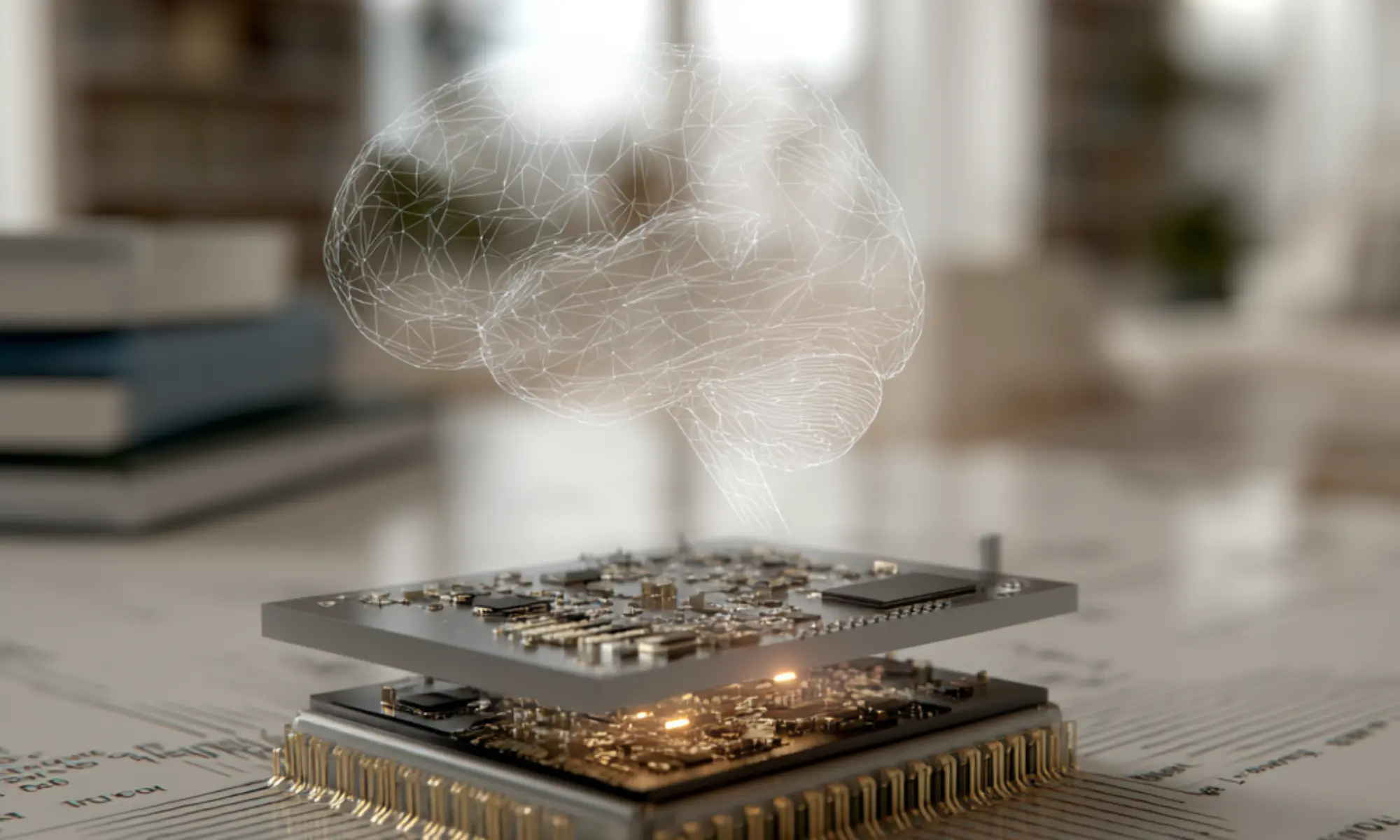Have you ever wondered what makes your smartphone, gaming console, or even your smartwatch so powerful? The secret lies in the tiny computer chips that act as the brains of your favorite devices. Each of these devices uses a different kind of chip, designed specifically for the job it needs to do.
Gaming chips are all about speed and graphics, while chips in smartwatches focus on saving battery and efficiency. The secret to how each chip works its magic lies in the art of chip design!
These chips are not just simple components. They are carefully crafted by engineers who design each chip based on the specific tasks it needs to perform. Today, we are diving deep into the secret world of chip design to uncover how these little components make big things happen and why each chip is built differently to handle specific tasks.
What Is a Computer Chip?
A computer chip, also known as a microchip or integrated circuit, is a small piece of silicon packed with billions of tiny components called transistors. These transistors act like super-fast switches, helping the chip process information, run software, and perform complex calculations. The more transistors a chip has, the more powerful and efficient it can be.
Imagine you are playing a video game. Every time you press a button, the chip inside your console or PC is working overtime. It’s processing your commands, rendering the graphics, and making sure there’s no lag when you jump, build, or attack. All of this happens because the chip's transistors are flipping on and off billions of times per second. It’s like having a team of tiny workers inside your device, each doing its job perfectly to make your game run smoothly.
If you're curious about which chips power your favorite games, check out our blog on The Chips Inside Your Favorite Games!
The Design Process: Turning Ideas into Chips
Designing a computer chip is a bit like building a city, but on a microscopic scale. Here’s how it works:
- Concept Stage: Engineers start with an idea, like making a chip that can process graphics quickly for video games. Imagine they want to design a chip that makes the next version of Fortnite look even more realistic.
- Blueprint Creation: They create a detailed design or blueprint, showing where each transistor and circuit will go. It’s like drafting the blueprints of a city, deciding where roads and buildings will be placed.
- Simulation: Before building the chip, designers use computer simulations to test if their design works correctly. It's like a test drive, where they make sure there are no bugs or glitches before the chip is built for real.
- Fabrication: Once the design is ready, the chip is manufactured in a clean room where even a speck of dust can ruin it. These clean rooms are so spotless that the air inside is cleaner than a hospital!
- Testing: Finally, the chip is tested to make sure it performs well and is ready for real-world use. Sometimes, they use test devices to run games or apps on the new chip to see how well it works.
What Makes a Great Chip Design?
Great chip designs are all about finding the perfect balance between power, speed, and efficiency. Designers need to think about how much data the chip needs to handle, how fast it needs to process information, and how much energy it will use. This is why gaming chips, like NVIDIA's RTX series, focus on fast graphics processing, while chips in smartwatches, like Apple's S-series, prioritize battery efficiency.
Imagine if your phone’s chip wasn’t designed well. You might try to load your favorite game, and instead of jumping straight into action, you’d be stuck staring at a loading screen forever. Or if your smartwatch chip wasn’t efficient, it might run out of battery before lunchtime. Good chip design makes sure technology is not only powerful but also user-friendly.
Real-World Examples of Chip Design in Action
- Smartphones: Chips like the Apple A17 Bionic or Qualcomm Snapdragon 8 Gen 2 help run apps, power cameras, and enable cool features like facial recognition. The chip in your phone is why you can take amazing photos, play games, and even talk to AI assistants like Siri or Google Assistant.
- Gaming Consoles: The AMD RDNA 2 architecture powers both the PlayStation 5 and Xbox Series X, delivering amazing graphics and smooth gameplay. Ever wondered how games like Hogwarts Legacy or Spider-Man: Miles Morales look so lifelike? That’s the chip at work!
- AI Devices: Chips like Google’s Tensor are designed specifically for artificial intelligence, helping with voice recognition, smart photography, and more. These chips are like the brain behind devices like Google Pixel phones, making them smarter with every use.
The Future of Chip Design
Chip design is always evolving, with new technologies pushing the boundaries of what is possible. Quantum chips, for example, could make computers millions of times faster. Imagine being able to load an entire movie in a second or play a game without a single lag. Eco-friendly chips are also being developed to reduce energy consumption, which is great for the planet.
There’s even talk of chips that could help create virtual reality experiences so real you might feel like you are actually in a different world. Imagine putting on a headset and suddenly standing on a beach, with the sand under your feet and the ocean breeze on your face, all powered by smart chip technology.
Understanding the secret behind chip design not only makes you appreciate your devices more but also shows how creativity, science, and technology come together to shape the future. Who knows? Maybe one day, you’ll be the one designing the next generation of powerful computer chips!










0 Comments